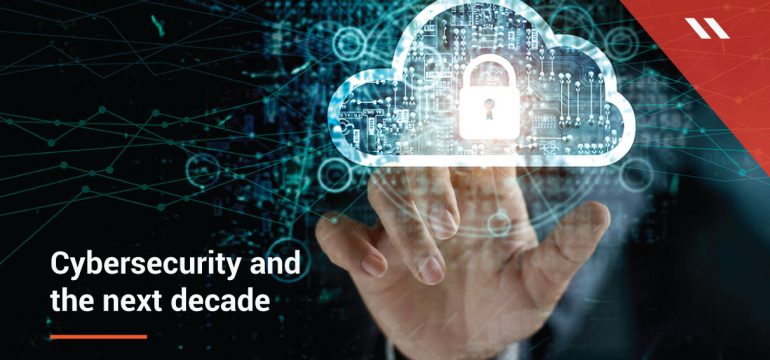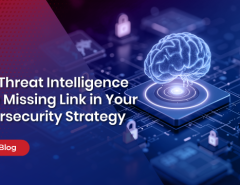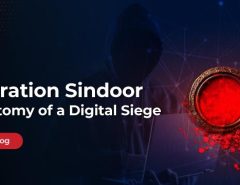Ernst & Young (EY) conducted a CEO imperative survey and gathered exclusive insights from 200 global CEOs and some of Forbes’ largest private players about what they thought will be the biggest problem for businesses in the coming years? The professional services giant asked the same question to 100 senior investors that have managed at least $100 billion worth of assets.The result – the elite group of participants overwhelmingly voted for cybersecurity to be the biggest threat for the enterprise in the next five to ten years.
Seqrite is in agreement with the report and while stakeholders are thinking right, they are not fully understanding the gravity of the situation, at least not yet.
As per our findings for Q1 – 2019 that Seqrite released through a periodic threat report recently, our labs detected 28 million malware to penetrate Windows Operating Systems, and this is just for three months.
Cyber attackers are always trying to stay one step ahead when it comes to designing malware that can outsmart the best cybersecurity systems. Recent examples of malware such as Emotet and TrickBot are classic use cases of how sophisticated and complex malware is evolving into.
If enterprises have to consider cyberattacks as the main problem here, stakeholders need to look at the mediums through which malware penetrates into a business network. So here, we have a host of channels such as emails, content collaboration platforms, office messengers, social media, websites, etc.
Today’s times are times of digital transformation. More and more organizations are going digital by lightning speeds. This change is dynamically required for every business for a number of reasons some of which are –
- To stay at par with the competition
- To be efficient and agile
- To be fast and to be in sync with how everybody is doing business today
Hence, the aforementioned penetration channels are in reality the core component of an enterprise’s initiative for digitalization. Hackers know that businesses cannot function without digital mediums and this is where most attacks are happening nowadays. Compare this to a couple of decades back where businesses were alien to cyberattacks as digitalization was at its minimum.
- Businesses that have experienced cyberattacks on operational technology infrastructure – 31%
- On average, companies lose $2.4 million after a malware attack with up to 50 days of downtime
- By 2021, cyberattacks are expected to damage the global economy by $6 trillion
Maybe large corporations can recover from this – however, for SMBs and SOHOs the impact of such an attack is going to be back-breaking. CXOs everywhere need to think more about when an attack will happen rather than if it will. This automatically transforms cyberthreats to be more of a business problem than an IT problem.
CTOs and CISOs largely come in the picture here. Secondly, budget re-alignments automatically get highlighted to prioritize more on safeguarding the enterprise. So far, budget allocations have been biased towards enterprise domains such as marketing, sales and IT. This needs to change and cybersecurity needs to receive a substantial chunk of annual budgets.
As for technology officers in the company, they need to start implementing simple but effective methods to secure business networks from cyberattacks.
Secure endpoints, networks, and data
Collaborating with a proven cybersecurity expert is always favourable then procuring an in-house team to fence an enterprises’ Information Technology Infrastructure. CTOs and CISOs should opt for a single solution that encapsulates securing every digital medium made available for the enterprise.
Review cybersecurity readiness of the employees periodically
The biggest threat to enterprise data is its employees. It’s not like employees are making mistakes while knowing that they are doing so. Innocent mistakes happen and with the increasing culture of BYOD and CYOD, critical business data is at risk. Hence, reviewing the cybersecurity readiness of employees periodically is important.
Conduct third-party audits to avoid supply chain attacks
Hacker tendency is such that they will always try and attack the weakest links in an enterprise. Supply chain attacks can happen in any industry and third-party audits act as medical tests to understand if these systems are sick, beforehand.
Have an action plan in place and prepare for the worst-case scenario
CXOs need to zero in on contingency plans in case of an attack. Designing protocols and business continuity processes in case of an attack event helps in ensuring the status quo of an enterprise.
Seqrite is one of the best-in-class cybersecurity solutions that enterprises can leverage on for an invincible cybersecurity system. Cyberattacks are here to stay with hackers finding varied ways to attack networks, more so jumping on to the gold rush created by cyber attacks pertaining to cryptocurrency, data theft, and financial information. With an entourage of CEOs agreeing to the dangers of cybercrimes, enterprises should act now!




